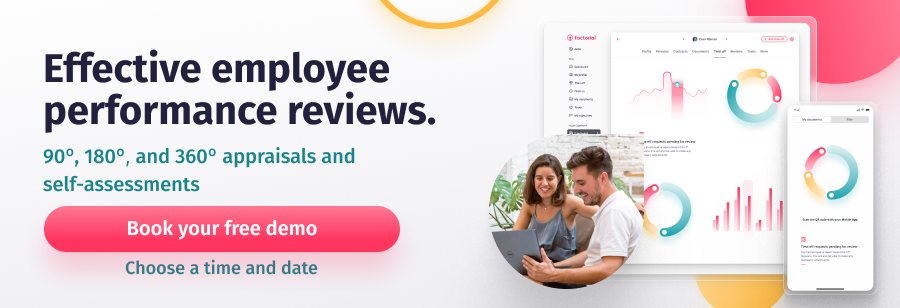What Is A Skills Gap?
The term ‘skills gap’ describes the difference between the skills an organisation needs to achieve its business goals and the actual skills its employees have.
Common skills gaps involve emerging skills such as digital expertise or emotional intelligence skills such as empathy, self-awareness and social skills. Skills gaps can also involve skills that are no longer in high demand so fewer employees have them or skills that are judged to be low skilled and less well paid so they attract fewer employees.
Examples of skills gaps can include:
- Technical skills: employees may know how to use one specific programme but need training on a newer or different one.
- Soft skills: employees may have the technical skills required for their role but may lack the soft skills, such as active listening, problem-solving, and teamwork, that contribute to effective collaboration.
- Leadership skills: employees may be promoted to a position where they are managing a team but do not have the communication and organisational skills required for good team management.
There are many reasons that a skills gap can emerge. Digital transformation within a business is a common reason. Employees may lack the basic digital skills to work in the new operating model. Retirement or senior leaders choosing to leave their roles can also reveal a skills gap when it becomes clear how much knowledge and expertise the senior-level executive who is no longer with the company holds. Skills gaps can also be caused by changing industry needs, demographic shifts or academic education that does not adequately meet business needs.
Is A Skills Gap A Problem?
A skills gap is generally considered a problem because it usually negatively impacts a business’s ability to meet its goals.
A skills gap can harm a business in the following ways:
- Reduced productivity: when the workforce does not have the right skills, they cannot be as productive as they could be, leading to a failure to meet the business goals.
- Low employee engagement: when employees lack the appropriate skills for their work, they can feel undervalued, lack motivation and start to limit themselves in terms of their overall contribution to the company goals. Correctly skilled employees are more likely to be engaged in their work.
- Increased training or hiring costs: if a skills gap is not addressed promptly, a company may face significant unexpected costs when it is forced to rapidly train its workforce in new skills to remain competitive.
- Compliance and safety risks: when the skills gap applies to regulations, there can be a risk to health and safety, which can potentially impact individuals and have financial ramifications.
Why Do A Skills Gap Analysis?
A skills gap analysis allows companies to understand the skills gaps in their workforce and develop a plan to address them.
There can be several benefits to conducting a skills gap analysis:
Change Management
A skills gap analysis allows companies to identify changes that need to be made to the structure and roles of their employees to keep up with industry trends and developments.
Recruitment
With a skills gap analysis in their hands, recruiting managers can be confident of employing candidates with a skill set that address the skills gap and meets the future needs of the business.
Development Plans
A skills gaps analysis allows companies to identify roles within their existing workforce that are affected by the skills that are missing and may benefit from targeted training in the specific skills. Training and development plans can be created that directly address the skills gaps in the workplace.
Resource Management
Conducting a skills gap analysis means organisations know where the different skills within the business are located and where specific skills are missing, allowing them to move individual employees to different roles to address a skills gap as required.

How To Conduct A Skills Gap Analysis
To conduct a skills gap analysis, it is helpful to start by identifying the skills that are missing from your workforce and then collect information on the skills that your existing employees do have. The following steps can be a helpful starting point.
- Identify the required skills
Working out the skills your organisation requires involves examining what the organisation is working to achieve now and what it would like to achieve in the future, based on industry developments and trends. While it is important to address the current skills gap immediately, a skills gap analysis can also play an important role in future-proofing the company.
- Prioritise the missing skills
Once you have the list of the skills the business needs to meet its goals, prioritise those that are essential and should be addressed immediately, as well as those that are desirable but can wait to be filled. It is also a good idea to consider soft and technical skills. Technical skills may feel like an immediate priority, but focussing too much on technical skills can create problems if you end up with employees who are technically strong but can’t work in a team or manage people.
- Evaluate the current skill sets in your workforce
There are several ways to evaluate the skills your employees have, including skills assessments and matrices, surveys, job descriptions, performance reviews, interviews and employee forums. Collating the information into a database or spreadsheet is essential to ensure you can use the information accurately to create a strategic plan for addressing your skills gaps. It can also help you identify what is a skills gap and what might be poor performance in a particular role.
Asking employees for general feedback as well as looking at the concrete knowledge you have in performance reviews and skills matrices will help tease out if a skill gap exists in the softer skills of leadership, teamwork, communication and problem-solving.
- Collate the two sets of information to create a list of immediate skill gaps
Once you know what skills you need and the skills already existing in the business, you can create a live list of the skills gaps. Keeping the information on the skills required and the skills you have up to date is essential to ensure your skills gap analysis remains relevant.
- Develop a plan for addressing the skills gaps
Alongside the list of identified skills gaps in your organisation, you can now create a plan for filling these gaps. Skills shortages and gaps can be addressed through:
- Internal or external training opportunities
- Mentoring programmes
- Recruitment
- Creating links between academic institutions and business


